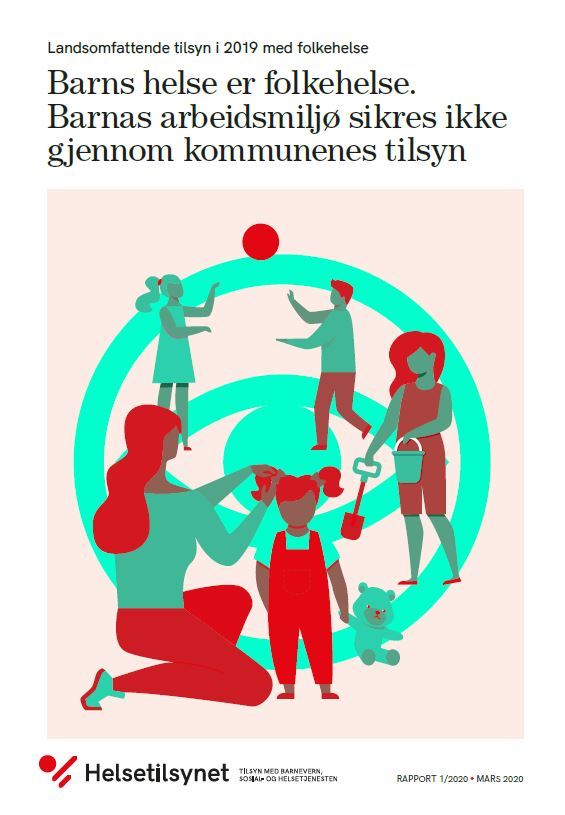Children’s health is public health. The working environments of children are not being adequately safeguarded through municipal supervision
Nationwide public health supervision in 2019
Report of the Norwegian Board of Health Supervision 1/2020

In 2019, the county governors of Norway carried out supervision concerning the way in which municipalities are fulfilling their supervisory responsibilities with regard to environmental health in kindergartens and schools.
Owners and managers of kindergartens and schools are responsible for the indoor and outdoor environments of children and young people at schools and kindergartens. The Norwegian Public Health Act requires municipalities to carry out supervision to ensure that owners and managers fulfil their responsibilities regarding the play and learning environments of children and young people. The supervisory responsibilities of municipalities cover all kindergartens and schools in the municipality, whether they are municipal, county or private.
The question considered by the county governors’ surveys was whether the supervisory work of the municipalities is being carried out in line with the requirements of the Public Health Act, to ensure that poor indoor climate and other unlawful environmental conditions are rectified. Amongst other things, the county governors investigated whether the supervisory work of the municipalities was organised in a way which ensured that authorities and tasks were clearly delegated and being carried out with sufficient independence and competence, whether the supervision was regular and based on risk information, and whether regulatory breaches which were discovered were being followed up.
Supervision has been carried out in a total of 51 municipalities. The county governors identified regulatory breaches in 42 of the municipalities which were subject to supervision, equivalent to eight out of ten municipalities.
The regulatory breaches which were identified stemmed from the failings of the municipalities: (i) failure to ensure that supervision is carried out, (ii) failure to ensure that supervision is carried out regularly, (Iii) failure to ensure that supervision is based on available information concerning risk, and (iv) failure to ensure that management processes are established to monitor the supervisory work and determine whether the tasks are being performed in accordance with applicable requirements laid down in laws and regulations.